Call for Abstract
Scientific Program
International Conference on Gastroenterology and Hepatology, will be organized around the theme “ Novelties and Current Trends in Gastroenterology and GIT Disorders”
Gastroenterology-2019 is comprised of 24 tracks and 59 sessions designed to offer comprehensive sessions that address current issues in Gastroenterology-2019.
Submit your abstract to any of the mentioned tracks. All related abstracts are accepted.
Register now for the conference by choosing an appropriate package suitable to you.
It is a study, how brain creates the perception of flavor, and how it matters for human culture. It includes all the eating habits, including culinary arts, molecular biology, neuroscience, psychology, human evolution, and child development, especially brain mechanisms involved in learning and memory, emotions, motivation and reward. It supports concern with medicines and over eating healthy food, and curing unhealthy habits such as food and drug addictions, obesity, diabetes, and neurodegenerative diseases such as Alzheimer’s etc.
It is a restrictive gastric surgery. Vertical banded gastroplasty (VBG) controls the amount of food that can be held by the stomach Vertical banded gastroplasty (VBG) is an elective weight loss surgery in which the stomach is partitioned off with staples and fitted with a plastic band, in order to limit the amount of food that the stomach can hold at one time. This is an Option for the obese people who are struggling to lose weight in various means of ways like medically-supervised weight loss programs, Pharmacotherapy etc.
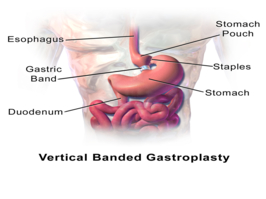
The goals of the Division of Gastroenterology Research Program are to advance knowledge in the areas of gastroenterology and hepatology through innovative basic science, translational, and clinical research and to foster the spirit of scientific inquiry among faculty, fellows, residents, and students. Gastroenterology Division researchers are actively involved in numerous projects in the study of the biology, prevention, diagnosis, and treatment of gastrointestinal and liver diseases.
- Track 3-1Colon cancer screening
- Track 3-2Hepatitis, cirrhosis, liver cancer, and other liver disease
- Track 3-3HIV and Mucosal Immunology
- Track 3-4Role of adiposity in esophageal and colorectal cancers
- Track 3-5Progression of chronic liver disease and serum bile acids
Epigenetics refers to inheritable changes in organic phenomenon that square measure, not like mutations, not because of alterations in DNA sequence. Two predominant epigenetic mechanisms square measure DNA methylation and simple protein modification. Epigenetic regulation of organic phenomenon has emerged as a basic pathway within the pathological process of various malignancies, together with cancers of the biological process system in reality; several exciting discoveries in epigenetics have started to study of cancers of the GI tract and hepatobiliary tree. Epigenetic modifications of DNA in cancer and malignant neoplasm lesions supply the promise of novel biomarkers for early cancer detection, prediction, prognosis, and response to treatment. Moreover, reversal of epigenetic changes represents a possible target of novel therapeutic methods and drugs style. In the future, innovative diagnostic tests and treatment regimens will likely be based on epigenetic mechanisms and be incorporated into the gastroenterologist’s practice.
It is a medical instrument used in surgical procedure to view in to abdominal part of the body. It determines the condition like Endometriosis and helpful in treating Ovarian cyst removal, tubal ligation, Hysterectomy. Laparoscopic surgery is also called as ‘Minimally Invasive Surgery’. Laparoscopic Surgery reduces the risk of Pain, Forms lesser scars, Contamination of the Internal parts and also Hospital stay of the patient also decreases are the main advantages of the Laparoscopic technique.

Endoscope is a medical device which is a flexible tube with a light and camera attached to it, where Doctor used to examine a person’s gastrointestinal tract by Non-Surgical Procedure. Endoscopy is done to examine the cause of abnormal symptoms in the body, removal of small tissue samples for laboratory testing which is known as Endoscopic Biopsy. Endoscopy is of different types based on the area of the body they Investigate.
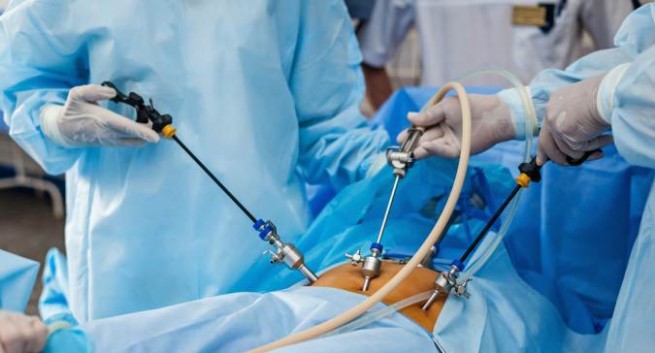
- Track 6-1Arthroscopy- Joints
- Track 6-2Bronchoscopy-Lungs
- Track 6-3Enteroscopy- Small Intestine
- Track 6-4Laproscopy- Abdomen
- Track 6-5Colonoscopy- Colon
Gastrointestinal Pathology is sub discipline of surgical Pathology. It deals with the analysis and exposure of growth and non-neoplastic diseases of the epithelial duct and accent organs, like the exocrine gland and liver. Though pathology diagnosing could be an important determinant of future cancer risk and screening interval, several of that diagnosis doesn’t lead to important morbidity or mortality for patients; therefore, errors could also be "masked" by the restricted impact to the patient within the gift context.
- Track 7-1Diagnostic Histopathology
- Track 7-2Endoscopic Biopsies
- Track 7-3Pancreatic Biliary Systems
- Track 7-4Gastrointestinal Physiology
- Track 7-5Histomorphology
- Track 7-6Gastrointestinal Tissue
- Track 7-7Hematemesis
- Track 7-8Hematochezia
- Track 7-9Melena
The digestive tube (GI tract) plays twin roles in epithelial duct Pathology: digestion and uptake of nutrients and also the additional discouraging task of maintaining immune equilibrium (protecting the body from doubtless harmful microbes, whereas inducement tolerogenic responses to innocuous food, commensals and self-antigens). The distinctive design of the digestive tract and hepatitis facilitates each of those functions; multiple levels of invagination ends up in a Brobdingnagian overall area that enables supreme nutrient absorption whereas housing the biggest variety of immune cells within the body. As several pathogens enter the body via the enteric membrane, it's very important the gut-associated humor tissues will give effective immune responses once necessary. However, inappropriate responses against uhealthy food and commensal antigens result in inflammatory disorders like celiac disease and inflammatory viscous disease (IBD) and enteric Surgery.
Surgeons are continued to boost their techniques for operational on large intestine cancers. They currently have a lot of robust (an improved} understanding of what makes large intestine surgery more doubtless to achieve success, like ensuring enough humor nodes are removed throughout the operation. Laparoscopic surgery is done through Gastrointestinal Hormones several small incisions in the abdomen instead of one large one, and it's becoming more widely used for some colon cancers. This approach usually allows patients to recover faster, with less pain after the operation. Laparoscopic surgery is additionally being studied for treating some body part cancers, however a lot of analysis is required to envision if it as effective as normal surgery. With robotic surgery, a surgeon sits at a control panel and Digestive Enzymes operates very precise robotic arms to perform the surgery. This type of surgery is also being studied.
Middle part of the GIT is examined through various methods which includes mainly three portions of the small intestine (duodenum, jejunum, and ileum). Various different techniques are used in treating various Gastrointestinal disorders.
- Track 10-1Capsule Endoscopy
- Track 10-2Gastroscopy
- Track 10-3Endoscopy
- Track 10-4Enteroscopy
- Track 10-5Esophagogastroduodenoscopy(EGD)
Gastrointestinal cancers account for approximately 25% of all cancer deaths in the Western world. There is a basic preventive approach that can utilize biomarkers in order to stratify patients into appropriate screening or surveillance programs. Biomarkers are clinical variables associated with clinical outcomes. In cancer biology, the best biomarkers are germline adenomatous polyposis coli mutations, which are highly predictive of colon cancer. In other areas, such as Barrett’s esophagus, despite early excellent success in identifying the importance of p16, p53, and aneuploidy in esophageal adenocarcinoma pathogenesis, useful biomarkers are still not widely used in clinical practice. New molecular biomarkers are identified in the future like epigenetic methylation patterns and genetic polymorphisms. In the meantime, clinicians must trust on healthy, inexpensive methods such as standard histopathology. Dysplasia is still the mainstay of cancer prediction in most inflammatory disorders of the GI tract and is an independent marker of cancer risk.
Genetics and Genomics will strongly influence the GIT. Molecular biology has become the integral part of the basic clinical Gastroenterology. A broad spectrum of infectious, inheritable and malignant epithelial duct diseases will currently be studied by molecular ways, together with enzyme chain reaction, crossbreeding and polymer sequence analyses. From common disorders like large intestine cancer, inflammation and multiple polyps; to rare conditions like hereditary injury telangiectasia, information of genomic developments is more and more extremely helpful to doctors and their patients.
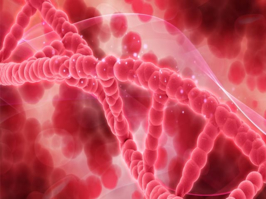
It generally refers to Inflammation of stomach or in the intestine and inhibits nutrient absorption and excessive water & electrolyte loss. It mainly causes by different types of Microbes and can easily spreads through various ways. Then the infection causes Digestive tract to become irritated which results in abdominal pain, Diarrhea and Vomiting.
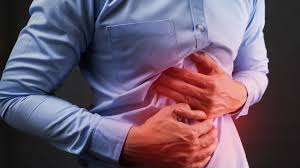
- Track 13-1Bacterial-Gram Negative Bacteria (Vibrio Cholera, Enteric Salmonella, E.coli), Campylobacter jejuni.
- Track 13-2Viral-Adenovirus, Astrovirus, stomach flu
- Track 13-3Parasites-Entamoeba Histolytica, Cryptosporidium
It works on "brain of the gut," which is a part of the nervous system and controls motility, endocrine secretions, and microcirculation of the gastrointestinal system. It mainly focuses on common Functional Gastrointestinal disorders like Irritable Bowel Syndrome, Heartburn, Abdominal Pain, Peptic Ulcer and Gallstone Pancreatitis which manages the gastrointestinal motility and Functional GIT disorders. Psychiatric relations to functional GIT disorders are included and treated though Neurogastroenterologic methods especially discomfort in abdomen and pain in the digestive tract.

An ulceration of the mucosa membrane of the esophagus, stomach or duodenum, may be caused by the action of the acid gastric juice or certain bacteria. The lower muscular structure muscle Lower Esophageal Spincter (LES) may be a muscular ring that closes off the passageway from the abdomen. If you have got achalasia, your LES fails to open up throughout swallowing, that it’s speculated to do. This results in a backup of food among your passageway. This condition can be related to damage nerves in your esophagus. It can also be due to damage of the LES.
Gallstones square measure laborious deposits that kind within the bladder, a small and pear-shaped sack that stores and secretes gall for digestion. . Gallstones will kind once there’s an excessive amount of steroid alcohol or waste in your gall, or if your bladder doesn’t empty properly. Once gallstones block the ducts leading from your bladder to your intestines, they will cause sharp pain in your upper-right abdomen. Medications generally dissolve gallstones, however if that doesn’t work, ensuing step is surgery to get rid of the bladder.

The liver is essential for digesting food and ridding your body of toxic substances. . Liver Cancer is the rare Syndrome which is difficult in detection. Liver disease can be inherited (genetic) or caused by a variety of factors that damage the liver, such as viruses and alcohol use. Obesity is also associated with liver damage. Over time, damage to the liver results in scarring (cirrhosis), this can lead to liver failure, a life-threatening condition Hepatocellular Carcinoma is the cancer that originates in the liver which is called primary liver cancer, which caused by cirrhosis, infection with hepatitis B/C viruses and hemochromatosis (excess Iron content in the liver).

- Track 17-1Liver Failure
- Track 17-2Enlargement of liver
- Track 17-3Ascites
- Track 17-4Portal Hypertension
- Track 17-5Jaundice and abdominal Pain
The digestive system is a vital collection of organs like Mouth, larynx, Pharynx, Esophagus, Small & Large intestine Duodenum and Anus. Aging may risk of something going wrong in the digestive system continues to rise, due to the attained after a long time effects from diet, lifestyle, diseases, and medications. In the elderly people, new medical issues can arise, like Diverticular disease or colorectal cancer, dyspepsia, Irritable bowel syndrome, Inflammatory bowel disease (Crohn’s disease and Ulcerative colitis), celiac disease, and GERD.

- Track 18-1NSAID Complications
- Track 18-2Diverticular Disease
- Track 18-3Colorectal Cancer
- Track 18-4Dysphagia.
Digestive disorders are common in children due to lack of Nutrition with the symptoms like abdominal pain etc. GIT and Brain are closely connected and functional conditions are due to a combination of extra sensitivity of the GI tract, with changes in the motility or movement of the digestive system. Our stomachs and intestines are moving food all the time, and some people feel this more intensely than other people. These conditions are common, sometimes run in families, and are usually found in individuals who are otherwise healthy. Children facing this problem mostly experience recurrent pain in the middle of the abdomen. When the abdominal pain or discomfort is relieved by stooling or is connected with a change in the frequency or consistency of the stool, we call that irritable bowel syndrome (IBS). Treatments for functional gastrointestinal disorders differ based on the symptoms.

- Track 19-1Bleeding from the gastrointestinal tract
- Track 19-2Lactose intolerance
- Track 19-3Food allergies or intolerances
- Track 19-4Severe or complicated gastro esophageal reflux disease (reflux or GERD).
Gastrointestinal disorders are most commonly seen during Pregnancy, due to increased levels of Progesterone. Symptoms like Vomiting, Nausea, Diarrhea, Heartburn and Gastro esophageal Reflux Disease (GERD). Gastrointestinal bleeding and perforation are the rare complications during pregnancy.
- Track 20-1Abdominal Pain in Early Pregnancy
- Track 20-2Dyspepsia, Nausea and Vomiting
- Track 20-3Hyperemesis gravidarum
- Track 20-4Inflammatory Bowel Disease
- Track 20-5Pancreatitis.
It deals with the prevention, diagnosis and management of diseases which mainly affect the liver, gallbladder, biliary tree and pancreas. Hepatitis affects millions of people globally and is associated with many severe problems and poor outcomes including liver transplant and liver cancer. The Hepatitis B & C are major reason for causing liver cancer in certain areas, while alcohol abuse has been linked to conditions such as cirrhosis and other serious complications.

- Track 21-1Jaundice
- Track 21-2Liver transplantation
- Track 21-3Drug Metabolism
- Track 21-4Damage to the pancreas or biliary tract caused by infection, cancer, alcohol, bleeding or obstruction
- Track 21-5Diseases of the liver related to excess alcohol consumption, including fatty liver disease, liver cirrhosis and liver cancer.
The digestive system consist gastrointestinal tract (GI), liver, pancreas, and gallbladder helps the body digest food. Our digestive system is a series of hollow organs joined in a long, twisting tube. It extends from mouth to anus and includes Esophagus, stomach, small and large intestines along with liver, gallbladder and pancreas are also involved. Many different factors cause digestive diseases Some common causes square measure microorganism and microorganism infections,inflammations, inherited disease, issue in digesting sure foods, poor circulation to the intestines or alternative organs, buster perforated organs, muscle dysfunction,, gallstones, stress, and side effects of anti-inflammatory drugs.
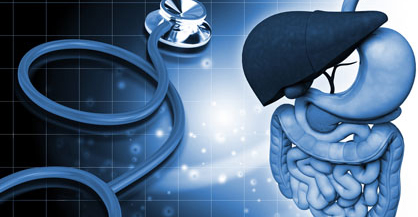
It is a condition where Sore in the Lining of the Stomach or Duodenum which is first part the small intestine. A burning sensation is the common symptom of the peptic ulcer. It is caused by Helico Pylori bacteria in the stomach and also excess use of NSAIDs. The other complications include bleeding, perforation and blocking of passage of food due to obstruction from the swelling or scaring that surrounds the ulcer.Gastric ulcers- occur on the inside of the stomach.Duodenal ulcers- that occur on the inside of the upper portion of your small intestine.
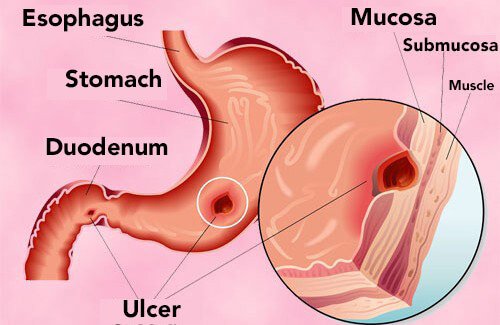
- Track 23-1Burning stomach pain
- Track 23-2Feeling of fullness, bloating or belching
- Track 23-3Fatty food intolerance
- Track 23-4Heartburn
- Track 23-5Nausea.
Gastrointestinal bleeding describes every form of hemorrhage in the GIT, from Pharynx to Rectum. Upper-Pharynx to ligament of treitz, Lower- ligament of treitz to rectum. Upper GIT bleeding remains major problem which commonly seen in 75% of emergency cases and most common causes are Peptic ulcers, Erosion and Esophageal varices.
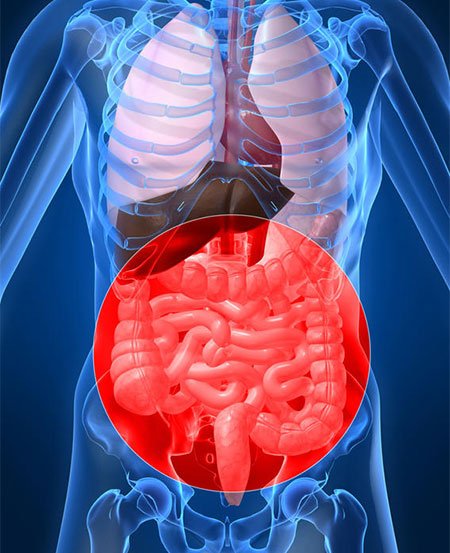
- Track 24-1Hematemesis
- Track 24-2Melaena
- Track 24-3Coffee ground vomiting
- Track 24-4Hematochezia.
